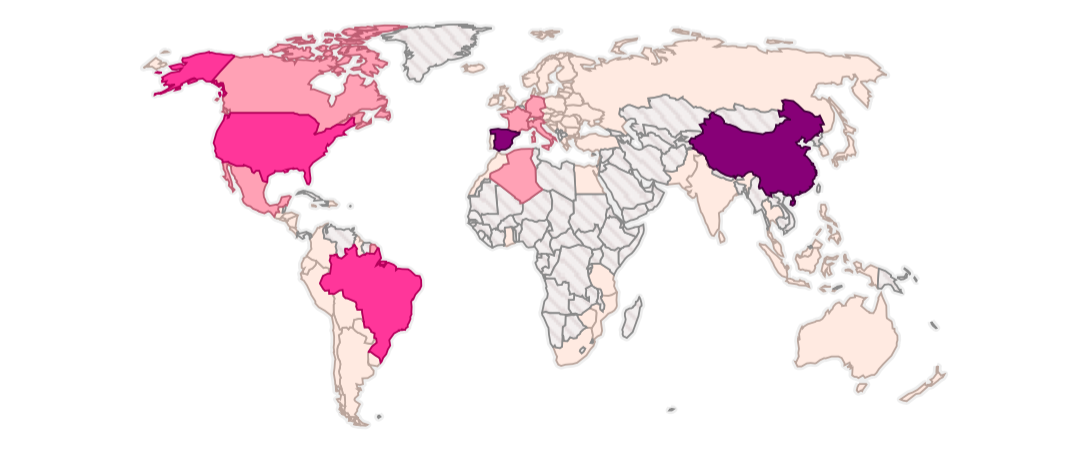On December 17, 2014, President Barack Obama and President Raúl Castro announced that the United States and Cuba would seek to reestablish diplomatic relations. Since then, the two countries have engaged in bilateral negotiations in Havana and Washington, and the United States has made several unilateral policy changes to facilitate greater trade between the two countries, which means nothing but business potential for many domestic producers.
“When some of the restrictions on U.S. agriculture exports were lifted early in the last decade, we were excited that there would be an opportunity to reestablish Cuba as a consistent wheat market for American farmers,” said Doug Keesling, a Kansas farmer on a testimony before the Senate Committee on Agriculture, Nutrition, and Forestry.
U.S.-Cuban relation enters a new era
The U.S. Department of State dropped Cuba from the terrorist list at the end of last month, which is regarded as one more big leap in the normalization of ties between America and its 90-mile-away neighboring country.
Cuba had been on the list since 1982. And a spot on the list means sanctions, a ban on exports and arm sales as well as other punitive measures. But the relationship between the two countries severed even earlier: Cuba and the U.S. have had no diplomatic relations since 1961, following the Fidel Castro regime when American property was confiscated on the island.
This was the relationship between the two countries, until the end of last year when President Barack Obama announced the U.S. would re-establish diplomatic relations with Cuba, which was accompanied by a series of actions aiming to ease trade restrictions.
Congress then moved swiftly on rule changes that could provide American producers of agricultural products greater access to Cuba by removing barriers to credit. In February, a bipartisan group of senators introduced The Freedom to Export to Cuba Act, which would allow U.S. companies to export products to Cuba directly, remove financial restrictions on business transactions and allow U.S. banks to extend credit to Cubans for the purchase of American goods. And in April, two Senators (Sen. Heidi Heitkamp, D-N.D., and Sen. John Boozman, D-Ark.) introduced one more — a legislation to ease agricultural trade.
“In Havana, I would say the pace of changes is slower,”said Ted Piccone, Brookings senior fellow with Latin Initiative, “but over the last several years, we’ve seen a number of changes toward opening the economy.”
U.S. – Cuban trade in the history
Except for publications, other informational materials, certain donated food, and certain goods licensed for export or re-export by the U.S. Department of Commerce, no products, technology, or services may be exported from the United States to Cuba, either directly or through third countries, such as Canada or Mexico.
But according to provisions of the Cuban Democracy Act of 1992, and the Trade Sanctions Reform and Export Enhancement Act of 2000, known as TSRA, the Commerce Department authorizes the sale and export or re-export of medicine and medical supplies, food and agricultural commodities to Cuba. Those interested in engaging in such exports or re-exports must first obtain authorization from the Commerce Department’s Bureau of Export Administration. All licensed sales may be financed by cash in advance or by third-country banks.
Trade balance is the difference between exports and imports. However, in the trade history between the two counties, the U.S. imports almost nothing from Cuba, with only a few exceptions.
By fiscal year 2008, U.S. agricultural exports to Cuba had reached a peak of $658 million. However, by the end of the last fiscal year, they had fallen by more than half, to $300 million. Yet at the same time, global agricultural exports to Cuba have doubled over the past decade to $1.7 billion. Despite this opening, U.S. government agencies – including Department of Agriculture – remain prohibited from providing government assistance, U.S. export assistance, and any U.S. credit or guarantees for exports to Cuba. Under TSRA, agricultural products are among a few types of goods that may be exported to Cuba under the longstanding U.S. embargo.
A market to be opened up
Cuba reported spending $2.55 billion in 2008 to import 3.42 metric tons of food and agricultural products, and U.S. products took up 27 percent. “If the embargo is removed, we could be poised to become a major trading partner with Cuba,” said Michael Scuse, undersecretary of the Farm and Foreign Agricultural Service of the U.S. Department of Agriculture at a Senate hearing in April.
Right now, the largest U.S. export to Cuba is poultry products, with exports valued at $148.1 million in fiscal year 2014. This made Cuba the eighth-largest export market for U.S. poultry. Other top U.S. exports last year included soybean meal (nearly $75 million), bulk soybeans (more than $29 million), and bulk corn (more than $28 million).
The near but under-developed market
Cuba depends heavily on imports to feed its 11 million citizens and growing numbers of foreign visitors. According to the World Food Program, Cuba imports about 80 percent of its food, which means that the economic potential for U.S. producers is significant.
According to the Food and Agriculture Organization of the United Nations, the most imported commodity by Cuba is wheat, which almost doubled from 2007 to 2011. For this section, U.S. farmers see a great potential for their goods with competitive quality and prices.
“Today, wheat imports from the United States have an upward potential of the whole 30 million bushels currently imported by Cuba. That’s because presently Cubans buy no wheat from the United States.”Keesling said.”That’s a $200 million opportunity that passes us by every year.”Currently,the Cuban state-owned grain buyer, Alimport, buys almost all their wheat from Canada and Europe, even though Cuban ports are much closer to U.S. ports.Based on USDA Economic Research Service models, those additional exports could support nearly 2,000 jobs.

